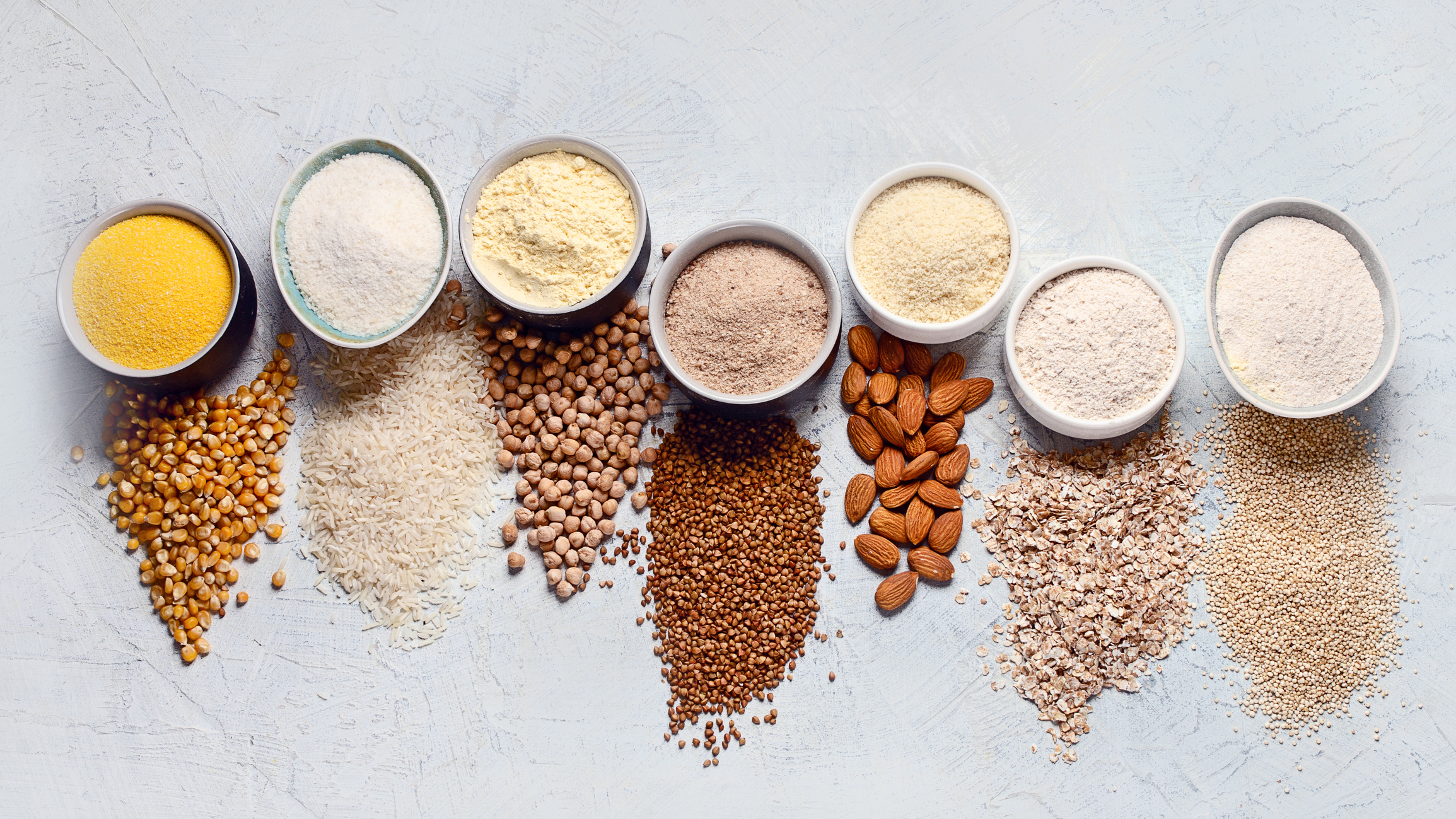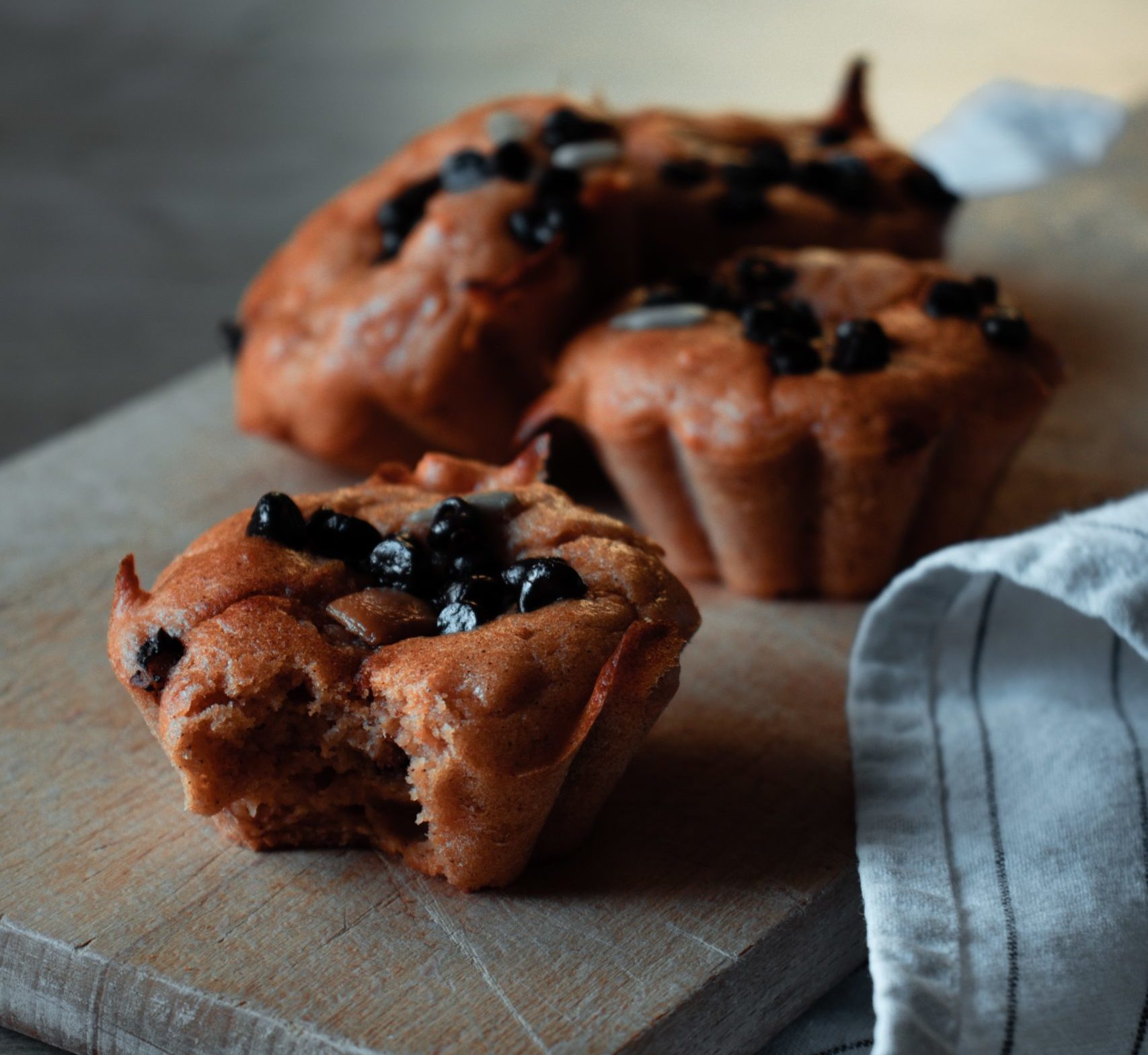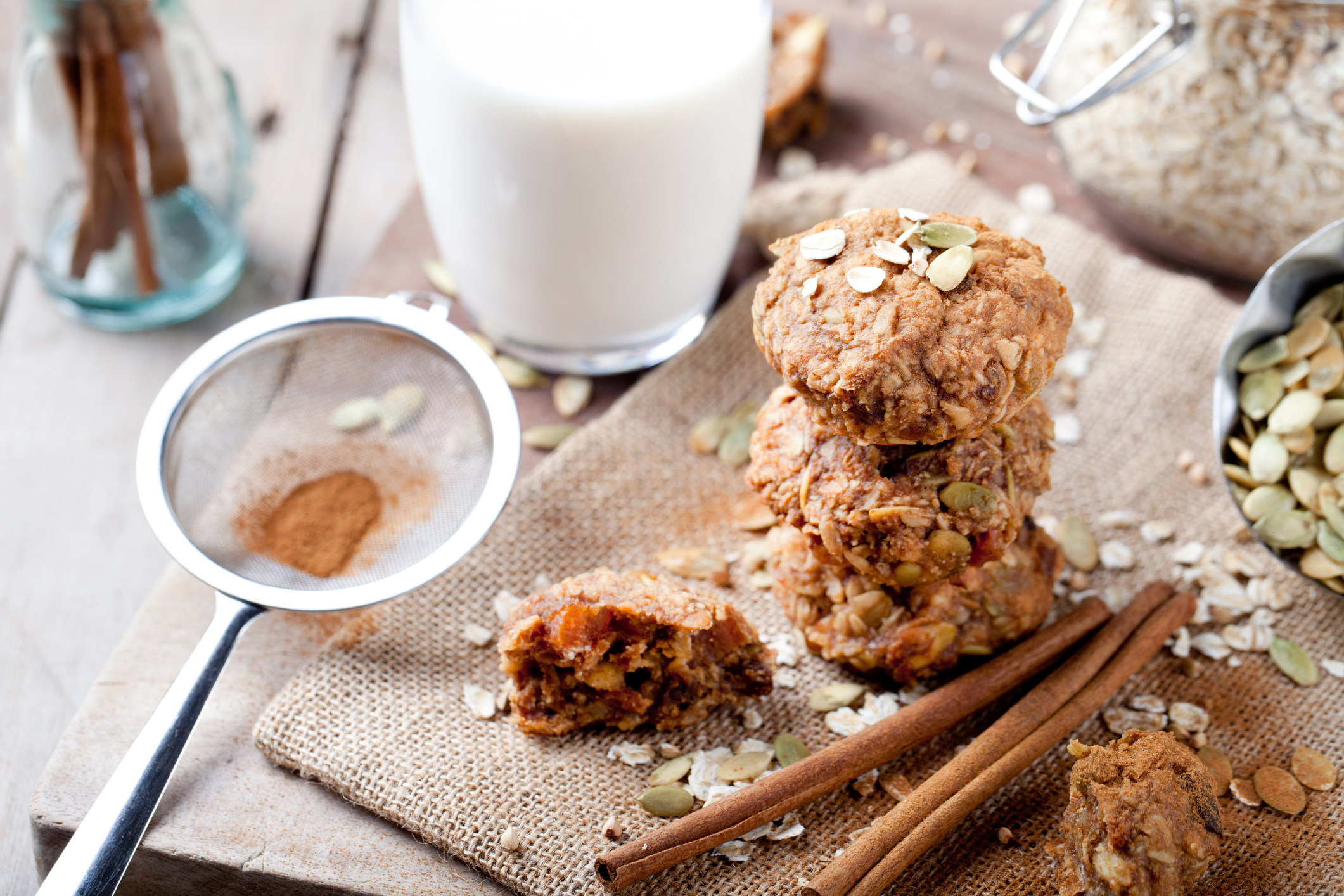You’re at the grocery store, staring at the wall of gluten-free flours in front of you. Coconut flour, almond flour, baking flour, 1:1 flour, corn flour, brown rice flour, chickpea flour… and don’t forget about all the starches.
Oh, and what exactly is xantham gum?
You’re trying to go gluten-free and choose the right option, but how do you know? If you’ve ever wondered what the differences are between all the gluten-free flours out there (and what each is good for) then keep reading as we breakdown gluten-free flours for you once and for all.
THE BEGINNER’S GUIDE TO GLUTEN-FREE FLOURS
Let’s face it, the number of flours out there continues to grow. Are they all created equally? Absolutely not. But can you learn how the choose the right flour for your recipe? Absolutely.
Let’s breakdown the most popular gluten-free flours so you can feel confident in the grocery store tomorrow.
ALMOND FLOUR
Almond flour is made from, you guessed it, almonds. They usually have their skin removed, are blanched, and are ground into a fine flour that can be used in baking.
This flour has a distinct rich almond taste and is best used in slightly more unrefined baked goods.
Almond flour works well as a crumble topping or crust for chicken or fish. It is used in things like cookies and pancakes, macarons, and some bread recipes.
Almond flour is full of nutrients including vitamin E, Manganese, Magnesium, and protein, and it has been shown to help control blood sugar levels 1.
In most recipes, almond flour can replace wheat flour 1:1, but know that almond flour tends to produce much more dense and slightly drier baked goods than wheat flour. It also adds a slightly earthier flavor to your baked goods.
COCONUT FLOUR
This is a popular choice for those on a paleo or primal diet, as coconut flour is one of the only approved flours. Many people bake with coconut flour, but it acts a little differently than wheat flour.
Coconut flour tends to dry out baked goods, so it’s important that you adjust your liquid to flour ratio when choosing this flour.
When replacing wheat flour with coconut flour, use only about 20% of what the recipe calls for 2.
This flour is great for baking, low in calories, high in fiber, and gives off a subtle coconut flavor, helping to enhance baked goods.
Just beware of the recipe! Too much coconut flour, and you’ll be biting into cookies that are far too dry.
We love this Paleo Banana Chocolate Chip Muffins Recipe made with coconut flour!
RICE FLOUR
Rice flour is a commonly used flour because it tends to be cheaper than alternatives and can be used as a baking substitute and thickener for sauces and soups.
This flour has a very mild flavor, making it a good addition to any recipe where you don’t want to alter the flavor.
Rice flour is most commonly used in things like sweetbreads, muffins, and cakes, but it does result in denser treats.
In general, rice flour can be used in a 1:1 ratio for wheat flour in baking recipes.
GLUTEN-FREE BAKING OR ALL PURPOSE FLOUR
Gluten-free baking, all-purpose, or 1:1 flour is usually made from a blend of gluten-free flours, starches, and xantham gum.
Xantham gum is a thickener and stabilizer that helps gluten-free baked goods achieve a similar texture to baked goods made with wheat flour and gluten.
Because xantham gum is already added to many gluten-free 1:1 flours (check the labels to be sure), this is a safe way to ensure that you can use the flour in a 1:1 capacity to make just about any recipe gluten-free.
Note that not all gluten-free baking, all-purpose, and 1:1 flours are created equally. Some have xantham gum while others don’t. Many are comprised of different types of gluten-free flours. Always read the ingredients first to make sure it will work for your recipe.
CHICKPEA FLOUR
Chickpea flour is often used with other gluten-free flours to increase the nutritional profile or protein levels of the dish. It can also be used as a vegan egg substitute in some dishes.
If you want to use chickpea flour as your main flour in a recipe, try a quick bread! You can substitute about half of the flour a recipe calls for with chickpea flour.
Chickpea flour is full of nutrients, especially protein, and is lower in calories than many other flours.
Many people also choose chickpea flour for savory baking due to the flavor profile.
Make sure you look up what ratio to use depending on the recipe you’re trying, as this one tends to vary.
GLUTEN-FREE OAT FLOUR
This is another great option when it comes to baking, but the ratio may vary. In many baked goods, you can expect to use about 1 1/3 cups of oat flour per every 1 cup of wheat flour, but you might also have to add a little liquid.
The good news is many recipes out there are already formulated for oat flour and other common gluten-free flours, so they take the guesswork out!
Oat flour has a nice sweet flavor to it and tastes great in things like muffins, breads, and cookies.
One of our favorite oat flour recipes is this Gluten-Free Banana Oat Cookies Recipe!
NOW, GET TO BAKING
These are some of the most popular gluten-free flours, but know that there’s really no wrong choice here. Depending on the recipe you want to make, do a little research to make sure your ratio is correct, and give it a try.
Many people find that they’ll try several before landing on their favorite to use in baked goods and recipes of all kinds, as they all vary a little in flavor and texture.
Our advice? Start with a gluten-free 1:1 flour, then expand your recipes from there.
Have fun with it, and know that if you don’t want to work with the ratios, there are many recipes that have already been adapted to each one of these flours that are a quick Google or Pinterest search away.
Happy baking!



+ show Comments
- Hide Comments
Free Resources
Take A Look at the latest from ITN:
Courses
add a comment